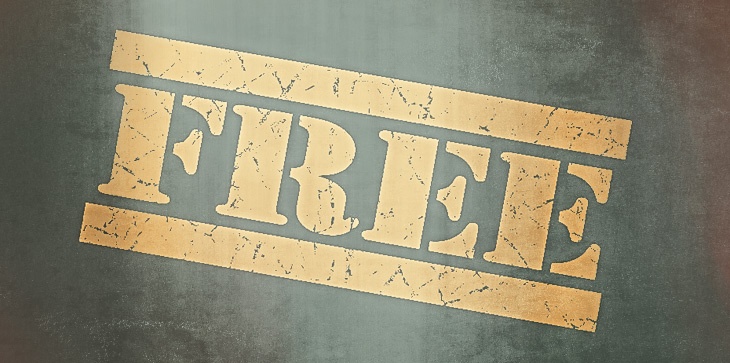There is an expression activists use. It’s one I happen to love: Think Global, Buy Local.
It’s a reminder that we should always be aware of the world around us, while doing our best to support each other close to home. It’s good karma; and as it turns out, not a bad marketing philosophy.
To help you understand why, let me run you through an experience I had just last week…
It was on Friday morning, following a week of events and four-hour flights. I had visions of a relaxing weekend floating around in my mind. But first, there were the final details of the week to attend to. So, I sat down to go through my messages. The first one I opened read something like this:
Dear Mr. Milanovic, please, at your earliest convenience, could you please send login credentials to your client’s DNS and FTP settings? Most sincerely, Grupta.
“More spam from India” I thought, “I wonder why my filter didn’t pick this one up?” Ready to toss the message, I almost missed that the email was CC’d to one of our longtime clients. This particular business owner had reduced his web budget all the way to zero dollars and had eventually gone inactive over the past two years. My team had been maintaining his site simply to keep it alive, only requesting reimbursement for annual hosting and registration fees we paid to a provider, without markup.
In reviewing the rest of the message, I was able to confirm that it was legitimate. From there, it was a simple matter of following the thread back to beginning – the Indian company had approached our client several weeks back.
The rate they offered for a month of service was roughly equivalent to what we charge for a couple of hours, and it included service items like search engine optimization, Google AdWords management, and even a brand-new website (which had already been completed as a show of good faith). The overseas firm even included ‘basic’ hosting costs as part of the package.
I can understand how my client saw an offer that was too good to refuse. I might have done the same, were it not for the fact that I know a little bit better.
Given that most business owners don’t have the technical savvy to assess these things, let me share my view on the different “services” and “advantages” that were actually being offered…
A Low Monthly Rate
This one is the easiest to tackle. I’ll freely admit that it’s not difficult for a company halfway around the world to charge less than I do. That’s especially true when you have access to cheap or child labor at roughly 30 Rupees – or right around sixty Canadian cents – for a day’s work.
I can’t compete with that, and common decency would prevent me from trying even if I were located in a different country.
Search Engine Optimization
Within the SEO description, there isn’t any clarification about whether this would involve on-page or off-site optimization. In creating the client’s website, we would already have optimized all the possible on-page elements. Given our track record in this area (we’re really good at it), there isn’t any reason to think we’d overlooked an obvious area to improve.
In fact, what was really holding the site back, on Google or elsewhere, was the declining amount of attention the client had paid to it. With no budget, ads, updates, or content generation/sharing activity to attract new visitors, the site’s opportunity to rank was essentially at a standstill or dropping.
Presumably, the overseas firm may be offering SEO “services” that would either include a) doing nothing, or b) creating low-quality content, or worse, c) deploying black hat linking schemes that improperly create link farms, classified ads, and spam link submissions.
Each of these has been clamped down on tightly by Google in recent years, meaning there’s no benefit to trying them, but lots of punitive reasons not to. And nothing to stop firms from selling them anyway.
Google AdWords PPC Management
Many Internet marketing providers love to pitch pay-per-click services, because industry practice is to charge a commission rather than a management fee. That’s not just a difference in phrasing, it’s an entirely separate approach to doing business.
I have an issue with the commission model because it tends to reward poor website performance. Ads that perform badly due to poor user experience cost more, and thus require a bigger budget. In that way, suppliers are paid a bigger rate for weaker campaign set up and management. So the ‘management’ might be free, but you can bet there’s a commission charge in the fine print.
A New Website Thrown In Free
The offer to create a new website is a power-play that's hard to resist.

You can imagine that amongst all the new business inquiries we get from potential clients, is a request for a refreshed web presence – it is easily in the top two or three pain points.
That’s because a new look and feel is music to the ears of a business owner whose site is getting outdated, or one who hasn't seen the kinds of results he or she had hoped for.
Unfortunately, a website redesign is hardly ever a fix for the real problem or bottleneck – instead, it’s the way the website is (or is not) being maintained or utilized. As they say, it’s the craftsman not the tool. When an otherwise functioning website is starved for updates and fresh content, it’s going to grow stale no matter what it looks like.
To create a brand-new website – and for free, no less – sounds incredible. What a show of commitment and determination! Behind the scenes, however, the reality is that a website can be automatically converted into a new design in a matter of minutes.
Even if the overseas provider is working manually, it would amount to around 10 or 15 minutes per page. There may appear to be a dramatic difference, but the actual website could very likely be much worse because of what’s going on under the hood.
When we migrate from one website or layout to another, there are dozens of questions we have to ask ourselves, and among them are…
- Have 301 redirects and internal link strategies been maintained or improved?
- Have hidden landing and thank you pages been replicated, along with form automation?
- Have modern file naming conventions and canonical structures been maintained?
- Has the website been placed on a reputable host within a respected country, and are analytics being maintained from one presence to another?
- Will the new site take modern lead generation best practices into account, or has it reverted to a dumb state?
When the cost of your website is “free,” or something close to it, you really are getting what you pay for. Even worse, you probably won’t be aware something is amiss until it’s too late.
The Real Cost of Offshore Help
If there were really a good way to get premium web design and online marketing help for pennies on the dollar, everyone would be using it – myself included. The reality, though, is that the bargains you hear about, or read in your inbox, are largely a mirage.
That’s already true when you look at what’s really going to be delivered, plus it gets reinforced when you consider the inherent communication challenges that creep up when you’re dealing with different languages, time zones, and more importantly, cultural influences.
It can be tempting to put a few new stamps on your website’s passport and try to save a little bit of money in the process. But, is your reputation really worth a low, low price? Can you afford to take big chances with the future of your business?
We don’t think so either, which is why we advise you to make the smart choice and invest your money with firms that are more likely to earn you a real return on what you have spent, no matter the size of the budget.




